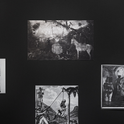by Stefan Collini (Oxford University Press, £25)
Surveying the "railway stalls" where the modern reader bought his literature in 1855, Walter Bagehot observed that a large space was filled by the "review-like essay and the essay-like review." The best examples of this genre were couched in an unbuttoned, digressive style, more like the "talk of the man of the world" than the "lecture of a professor."
As Stefan Collini points out in Common Reading: Critics, Historians, Publics, itself a collection of review-like essays and essay-like reviews, Bagehot's attitude to "review writing" was actually more ambivalent than this makes it sound. He regarded reviewing as something "able men" fell into rather than chose as a vocation and looked back longingly at the "old days of systematic arguments and regular discussion."
That Bagehot should have waxed nostalgic for the early days of general cultural periodicals such as the Edinburgh Review might strike us as odd, Collini notes. After all, we tend to regard the Victorian period as the heyday of such journals, and to see in it the embodiment of an "integrated culture" in which writers like Bagehot addressed a broad, educated reading public not yet "stratified between highbrow and lowbrow." Yet the circulation of the general reviews in the mid-19th century was actually far smaller than those enjoyed today by, say, the Times Literary Supplement or the London Review of Books—not to mention Prospect itself.
Common Reading is not mourning the passing of anything, therefore. Indeed, it is Collini's allergy to the elegaic mode that gives these "critical essays about critical essayists," nearly all of them originally published in the modern successors to the Victorian reviews, their distinctive tone. If he is right, the golden age of the general review was nothing of the sort, though this hasn't stopped much of the periodical journalism of the past century being "scarred by a sense of its own belatedness, of coming after the real thing."
The point is that periodical journalism has always operated in "troubled territory," staking out the "treacherous border country between academic and non-academic writing." The essays in the first part of this book examine writers who have worked that terrain. Some of them were academics (William Empson, Herbert Butterfield), some of them not (VS Pritchett, Edmund Wilson, Aldous Huxley). And some of them are or were sometimes academics and sometimes not (EP Thompson, Perry Anderson). But what these disparate figures have in common is that they all wrote about books and ideas for a non-specialist audience. (The essays in part two address, among other things, the question of what such an audience is exactly.)
Collini is almost as interested in the literary life as he is in literature itself. The essays on Thompson and Anderson, for example, make a good deal of the fact that the former wrote his masterpiece, The Making of the English Working Class, while working as an adult education tutor and living among "manual workers and trade unionists" in Halifax, and that the latter is "essentially a private scholar."
Digressions like these on authors' ways of living serve an important purpose: they remind us that the essayist's authority derives, in the final analysis, not from his holding this chair or that, but from the distinctiveness of his voice. One of Collini's strengths as a critic is his close attention to the ways in which authority is achieved at the level of the sentence and in the verbal textures of discursive prose. The essay, he implies, is as much a performance as it is an argument.
It is entirely characteristic, therefore, that he should begin the piece on Perry Anderson with an assessment of the historian's "bracingly distinctive voice"—its "Olympian" cadences and mountainous denunciations. Anderson's magisterial generalism, Collini writes in a moment of untypical wistfulness, "would not have been out of place in La Revue des deux mondes or the Edinburgh Review." He is much less forgiving, however, of Anderson's "polarising political topography," which he thinks tends to flatten and simplify the contours of the "intellectual field." William Empson, on the other hand, is praised for keeping his seriousness about politics "largely private." Very occasionally Collini allows his seriousness about politics to show through—notably in a furious (and hilarious) piece about the depredations of the research assessment culture in British universities—and, for all his wit and subtlety, you find yourself wishing he'd do this a bit more often.
Mostly, though, he is faithful to Bagehot's ideal of an essayistic style that glances "lightly from topic to topic," and this comes out in his apportioning of praise and blame; for instance, in his admiration for the way EP Thompson's "rich armoury of styles" checked the Manichean drift of his social criticism and saved his writing from the "arid abstractions of 'critique.'" There is a self-reflective relation to his subject here, for the qualities Collini admires in Thompson are those he cultivates in his own prose, and which make him one of the finest essayists we have.











